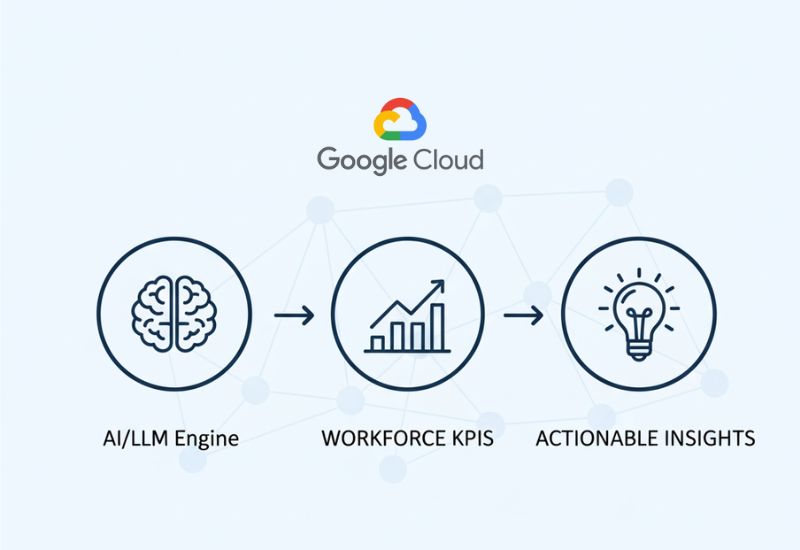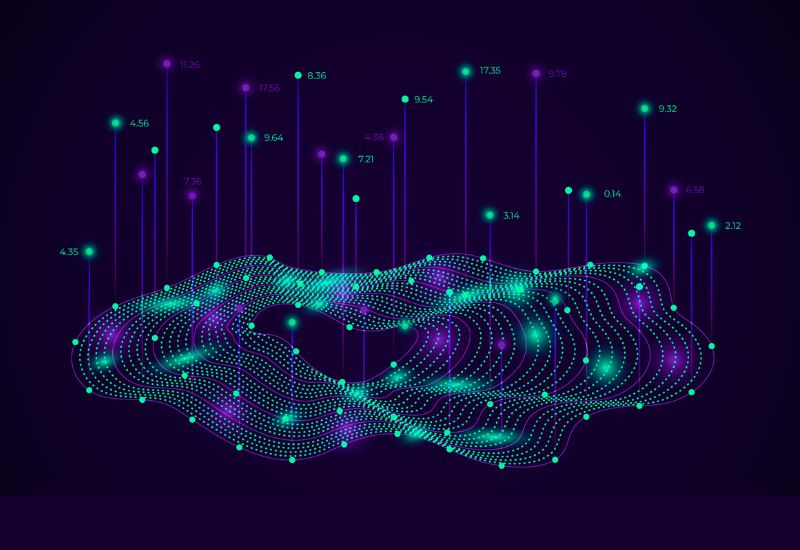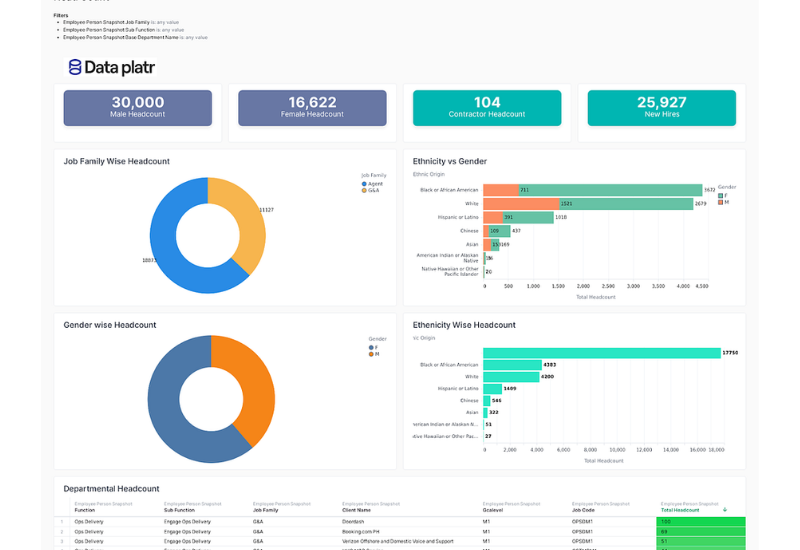What is Data Mining?
Data mining is the practice of analyzing vast datasets to get meaningful patterns, correlations, and insights that drive smarter decision-making. It combines elements of machine learning, statistics, and database systems to transform raw information into valuable knowledge. Businesses rely on data mining to identify hidden opportunities, optimize operations, and predict future outcomes. In essence, it turns overwhelming amounts of data into actionable strategies.
How Data Mining Works
Data mining follows a systematic process to ensure accuracy of insights. It begins with data collection from various sources, followed by cleaning and transforming the raw data into usable formats. Advanced algorithms such as clustering, regression, and classification are then applied to detect meaningful patterns. Finally, results are validated and deployed into business operations, enabling informed and data-driven strategies.
Data Mining Techniques
- Classification – Classification organizes data into predefined categories, such as classifying emails into spam or non-spam. It relies on algorithms like decision trees and support vector machines to assign data points to specific groups. This helps businesses automate processes such as fraud detection, sentiment analysis, and medical diagnosis. It’s one of the most widely used techniques in Data analytics.
- Clustering – Clustering groups data points based on similarities without predefined labels. For example, it can segment customers by purchase behavior or demographics. This enables businesses to target specific customer groups with tailored marketing campaigns. It is also used in anomaly detection, market research, and scientific data analysis.
- Regression – Regression is used for predicting continuous numeric outcomes such as sales, revenue, or stock prices. By analyzing relationships between dependent and independent variables, it helps forecast future trends. Businesses apply regression to optimize pricing models, predict demand, and assess financial risks. It is a cornerstone in predictive analytics.
- Association Rule Learning – This technique identifies relationships between variables in large datasets. A classic example is market basket analysis, where retailers discover products often bought together. It helps in cross-selling, product placement, and recommendation systems. Association rules strengthen decision-making in e-commerce and retail strategies.
- Anomaly Detection – Anomaly detection finds unusual patterns in data that deviate from normal behavior. It’s commonly used in fraud detection, cybersecurity, and quality assurance. By identifying anomalies early, businesses can prevent financial losses or operational failures. It ensures systems remain reliable and secure in high-risk industries.
Benefits of Data Mining in Business
- Improved Decision-Making – It equips businesses with accurate insights, enabling decisions backed by evidence rather than guesswork. This reduces risk and enhances long-term planning. Organizations can quickly identify opportunities and threats with greater confidence.
- Customer Personalization – Businesses use to tailor products and services to customer needs. Recommendation engines, personalized offers, and predictive analytics improve customer experiences. This leads to higher engagement, loyalty, and satisfaction.
- Fraud Detection – Anomaly detection and predictive models identify suspicious activities in real-time. Financial institutions rely heavily on Mining to detect fraud in credit card transactions. By reducing risks, companies save millions in potential losses.
- Operational Efficiency – Mining data highlights inefficiencies across operations. It helps businesses optimize supply chains, reduce costs, and streamline workflows. Efficiency gains translate into increased profitability and better resource utilization.
- Competitive Advantage – Mining shows hidden trends that competitors may overlook. Companies that act on these insights gain market leadership. From launching innovative products to improving customer retention, the advantage is significant.
Different Types of Data Mining
- Predictive Mining – Uses historical data to forecast future outcomes. Businesses apply predictive models to estimate sales, demand, or customer churn. It supports proactive decision-making across industries.
- Descriptive Mining – Focuses on summarizing and understanding existing data patterns. It reveals customer behavior, buying trends, or operational bottlenecks. Descriptive insights help businesses understand their current state.
- Diagnostic Mining – Explains the reasons behind specific outcomes. It analyzes past data to identify causes of events, like why sales dropped during a certain quarter. This improves problem-solving accuracy.
- Prescriptive Mining – Goes beyond insights to recommend the best course of action. It combines optimization techniques with predictive models to guide strategic planning. Prescriptive analytics helps in resource allocation and business strategy.
- Sequential Mining – Identifies trends and relationships over time. For example, it tracks customer buying journeys or seasonal sales trends. Sequential analysis is valuable for time-based forecasting and customer lifecycle management.
Step-by-Step Guide to the Data Mining Process
- Define Business Objectives – The first step is setting clear goals, such as increasing sales or reducing churn. Objectives guide the entire mining process. Without them, insights may lack business value.
- Collect Relevant Data – Data is gathered from multiple sources like databases, CRMs, IoT devices, or external datasets. Quality and relevance are crucial at this stage.
- Clean and Transform Data – Data often contains errors, duplicates, or missing values. Cleaning ensures accuracy, while transformation formats data for analysis. This step improves the overall reliability of insights.
- Apply Data-Mining Algorithms – Algorithms such as clustering, regression, or classification are used to detect patterns. The choice depends on the business objective and type of data.
- Interpret and Evaluate Results – Insights are validated against business goals to check accuracy. Evaluation ensures results are actionable and reliable.
- Deploy Insights into Strategy – Findings are implemented into day-to-day operations. Businesses use them for marketing campaigns, risk management, or operational improvements.
Data mining vs Data analytics
Although often used as if they mean the same thing, data mining and data analytics are distinct processes within data science.
Data Mining – Focuses on discovering hidden patterns, correlations, and trends within large datasets. It uses machine learning, algorithms, and statistical models to uncover previously unknown insights. For example, finding that customers who buy baby diapers often buy baby wipes.
Data Analytics – Focuses on interpreting existing data to answer specific business questions. It uses tools like dashboards, BI platforms, and statistical techniques to measure performance, track KPIs, and make informed decisions. For example, analyzing quarterly sales data to identify revenue growth trends.
Key Difference: Data mining is about exploration and discovery, while data analytics is about interpretation and explanation. Together, they form a powerful cycle: mining uncovers insights, and analytics turns those insights into actionable strategies.
How Does Data Mining Inform Business Analytics?
- Identifying Hidden Market Trends – Data shows patterns in customer preferences and market shifts. This helps businesses adapt strategies quickly.
- Enhancing Predictive Models – Data provides structured input that strengthens forecasting models. Accurate predictions lead to smarter business planning.
- Supporting Evidence-Based Strategies – Rather than relying on intuition, businesses use mined insights to shape strategy. This ensures data-backed decision-making.
- Improving Customer Lifecycle Management – From acquisition to retention, mining helps optimize every customer touchpoint. Companies can deliver value at each stage of the journey.
Challenges of Data Mining
- Data Quality Issues – Inaccurate, incomplete, or noisy data can lead to misleading results. Ensuring high-quality input is essential for trustworthy insights.
- Scalability – Managing ever-growing datasets requires powerful systems and advanced infrastructure. Without scalability, mining becomes inefficient.
- Privacy Concerns – Sensitive data, especially customer information, must be protected. Data governance and compliance with regulations like GDPR are critical.
- Algorithm Complexity – Choosing the right algorithm for a specific dataset is often challenging. Missteps can reduce accuracy and reliability of results.
- Integration Problems – Combining structured and unstructured data from multiple sources is complex. Poor integration may delay insights or reduce effectiveness.
Applications of Data Mining
- Banking – Data helps in fraud detection, credit risk assessment, and customer segmentation. It supports secure and reliable financial services.
- Retail – Retailers use data for personalized promotions, recommendation engines, and supply chain optimization. It directly boosts sales and customer loyalty.
- Healthcare – Predictive analytics assist in early disease detection, patient profiling, and treatment optimization. Healthcare providers use data to improve patient outcomes.
- Telecommunications – Mining enhances network optimization, churn prediction, and targeted service offerings. Telecoms reduce losses and retain more customers.
- Manufacturing – Predictive maintenance and quality control ensure reduced downtime. Mining data helps improve efficiency and cut operational costs.
Data mining use cases
Walmart’s Pop-Tarts and Hurricane Forecasting
Walmart’s data mining team discovered an intriguing pattern: sales of strawberry Pop-Tarts surged sevenfold before hurricanes. By analyzing historical sales data tied to weather events, Walmart proactively boosted inventory loading trucks with Pop-Tarts and positioned them prominently in stores likely to be affected. This predictive strategy not only met customer demand but also generated significant incremental revenue.
Link: Walmart Uses Data to Respond to Hurricanes
Amazon’s Recommendation Engine Powering 35% of Sales
Amazon’s recommendation systems are a foundation of its e-commerce success. Around 35% of the company’s total sales stem from personalized recommendations like “Customers who bought this also bought…” By harnessing vast user data such as purchase history, browsing behavior, and demographic signals Amazon delivers highly relevant suggestions that drive conversions and enhance shopping experiences.
Link: Decoding Amazon’s Recommendation Engine
Future Trends in Data Mining
- Integration with AI & Machine Learning – Advanced algorithms will make predictions smarter and faster. AI integration will dominate future mining efforts.
- Automated Data-Mining – Tools that automate cleaning, modeling, and interpretation will reduce human effort. This makes insights more accessible to non-experts.
- Real-Time Data – Businesses will adopt systems that provide instant insights. Real-time mining enables faster decision-making in dynamic markets.
- Data in IoT – With billions of connected devices, IoT data will expand mining applications. It will provide richer and more diverse insights.
- Enhanced Data Governance – Ethical and responsible data use will be prioritized. Stronger governance ensures compliance and builds customer trust.
Conclusion
By using techniques like classification, clustering, and regression, businesses can gain deeper insights, predict outcomes, and stay ahead of the competition. As data science continues to evolve, organizations that embrace data mining will be better equipped to harness opportunities, mitigate risks, and drive innovation.
Contact us at [email protected] or Book time with me to organize a 100%-free, no-obligation call
Follow us on LinkedIn for more interesting updates.



























